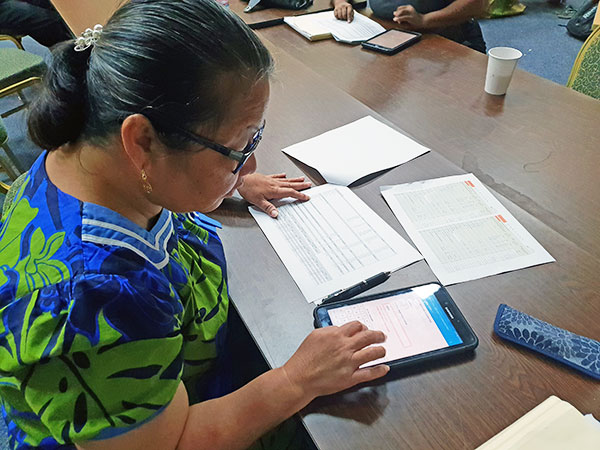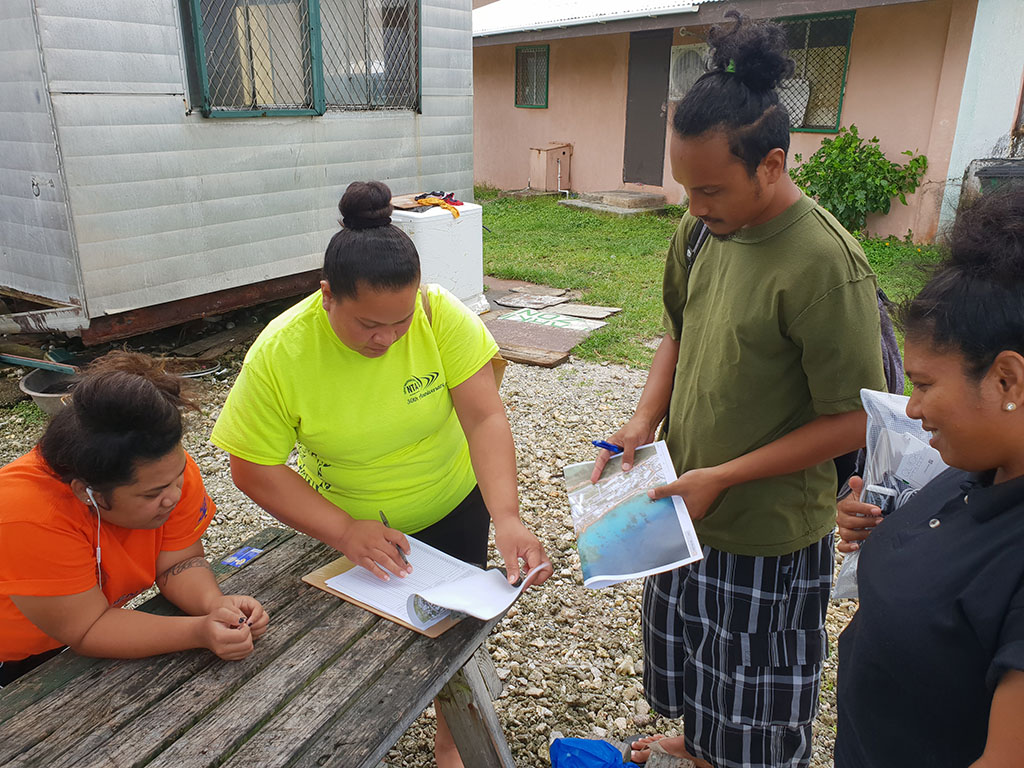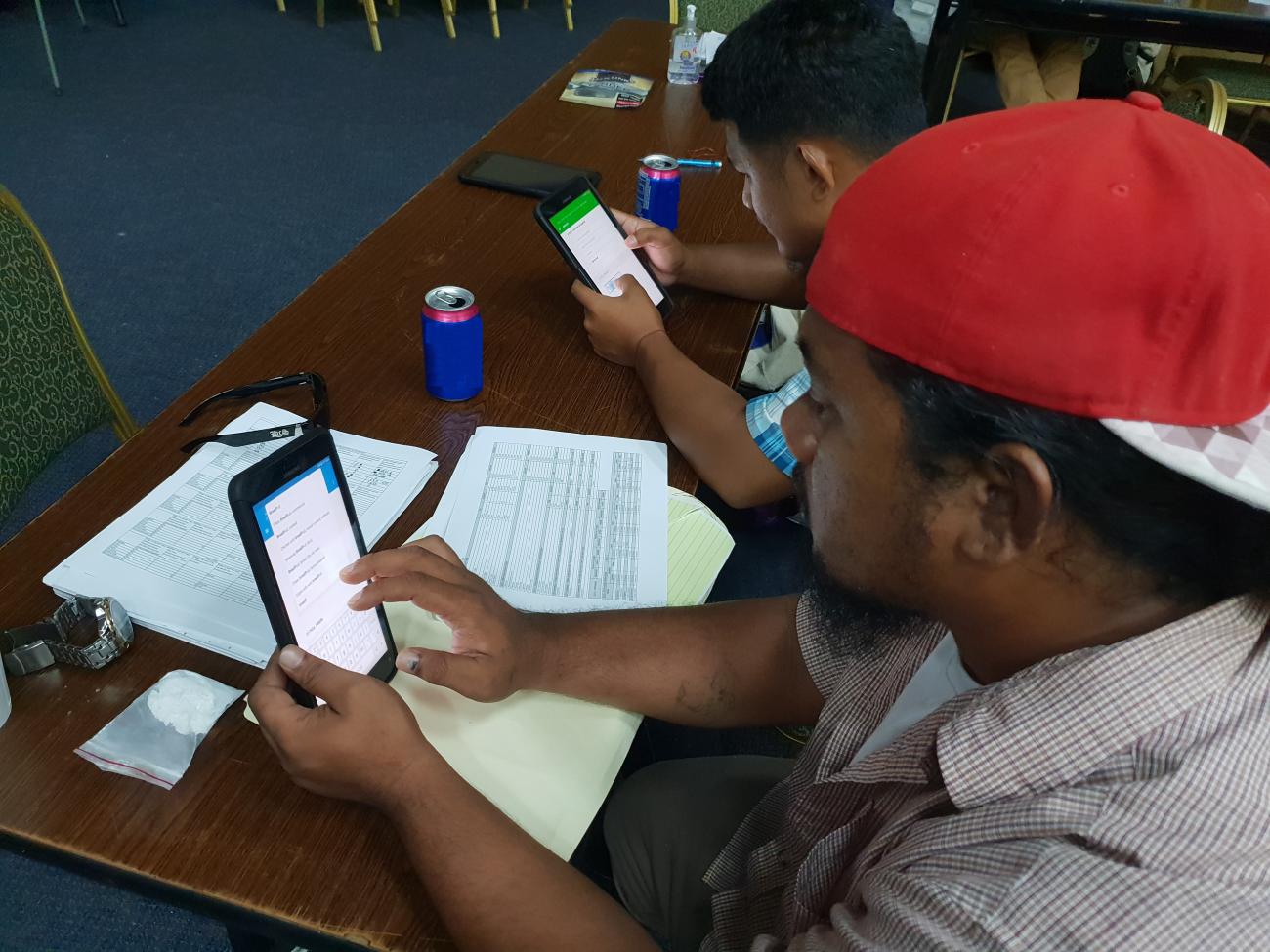The demand for timely, reliable and disaggregated development statistics is greater than ever before, especially as countries around the world strive to monitor their progress towards Agenda 2030 and the Sustainable Development Goals (SDGs). Household consumption and expenditure data is a key building block in meeting these demands and informs economic and social policy.
In the Pacific, consumption and expenditure data is typically collected through household income and expenditure surveys (HIES) with households completing a two-week food acquisition diary. Survey results indicate that diary response rates often diminish over the two-week diary period, indicating respondent fatigue and/or poor survey management, ultimately undermining data quality. National Statistics Offices and development partners have therefore been looking for enhanced methodologies that would help to improve the collection of high quality data. This experiment is aimed at testing new methods that could help improve the quality of data collected.
According to Kristen Himelein Kastelic, a Senior Statistician at the World Bank: “The global community considers ending extreme poverty to be such an important objective that it is the first Sustainable Development Goal, but without high quality data, we will never know how close we are to achieving this objective. At the national level, high quality data is essential to ensure that programs and services have sufficient resources and are properly targeted.”

An ideal, but challenging, environment
Starting mid-July 2018, SPC together with the Economic Policy, Planning and Statistics Office (EPPSO) of the Government of the Republic of the Marshall Islands (RMI), supported by funding and technical partners, are co-leading a real-world experiment to update data collection methodologies, technologies, and good practices in conducting household income and expenditure surveys in a Pacific Island environment*. RMI was selected as an ideal location for the experiment given its diverse economic environment, income sources, and the differing expenditure and consumption behaviour of households in the urban and rural centres. It is, nevertheless, a geographically challenging environment, as are many of the Pacific Island countries and territories. Innovative technology will therefore be used in the experiment. In addition to the traditional paper-based collection process, the experiment will use digital (tablet) instruments to collect data, and satellite technology will be used as a means to capture and back-up data over the internet in remote island atolls.
Field operations for the HIES experiment began this week across six atolls in RMI, including the densely populated urban atolls of Kwajalein and Majuro, and four remote rural atolls. Through comparing the survey results from both the traditional and innovative technologies, the experiment will identify optimal and the most cost-effective methodologies for data collection for economic and social policy formation in Pacific Island countries and territories (PICTs). The project will also enhance the capacity of EPPSO to implement complex statistical collections, thus ensuring a sustainable impact.
Updating methodology – a costly but crucial process
Since 2011, majority of the PICTs have implemented a regionally standardised HIES methodology. However, it is necessary to conduct this HIES methodological experiment to ensure an optional survey method available to the Pacific region.
SPC’s Director of the Statistics for Development Division, Ofa Ketuu, says: “Untested change of statistical methods and systems is a complex and costly process and the data may not deliver the required outcome of producing timely quality data at lower cost. The results from this HIES experiment will help member countries in the Pacific to make well-informed decisions on which method and system to adopt when conducting HIES. Wherever possible, a process of testing and validation should be followed for any new statistical method or system that is introduced to the region, this will help to ensure that they are fit for purpose and implemented according to statistical best practice”.

The HIES experiment will also test the inclusion of new questionnaire modules to collect complementary data to meet the demand for more dynamic data and to eliminate the need to conduct stand-alone surveys. These new modules will capture data on:
- Food acquired and consumed outside of the household, such as at restaurant and takeaway venues, which are anecdotally identified as being a significant source of calories across the Pacific region and a food source that is thought to be poorly measured through the use of the current food acquisition diary;
- Enhanced labour market data, disaggregated by age and gender and employment;
- The Food Insecurity Experience Scale to measure experiences of moderate-to-severe food insecurity and to report against SDG indicator 2.1.2;
- Household exposure to shocks through adverse environmental, economic and social change, and the affect and response to issues such a drought, natural disaster and adverse social events;
- Disability to identify vulnerable populations, including children and women; and
- Enhanced information on health and fisheries.
From a field experiment to regional standards
After completion of field operations, technical collaborating agencies will be engaged to analyse the data to draw conclusions as to the most efficient means to collect consumption data and to identify whether the new modules meet data user demand. The conclusions and the recommendations will be presented to the recently established Pacific Statistics Methods Board early in 2019 and, subject to endorsement by the Board, the recommended methodology will be synthesised and disseminated to PICTs for implementation when conducting HIES.
Contact: Michael Sharp, Economic Adviser, Statistics for Development Division, SPC
*RMI’s EPPSO, the World Bank and SPC all contribute technically and financially to the experiment. SPC’s financial contribution was a co-investment by SPC and the Government of New Zealand, through generous funding provided by the Ministry of Foreign Affairs and Trade (MFAT). The project has a number of collaborating technical partners, including: the International Labour Organisation (ILO), the United Nations Children’s Fund (UNICEF), the Food and Agriculture Organisation of the United Nations (FAO), the University of Waikato and Statistics-New Zealand; along with the World Bank Group’s Poverty Global Practice and the Pacific Community’s Statistics for Development Division.
